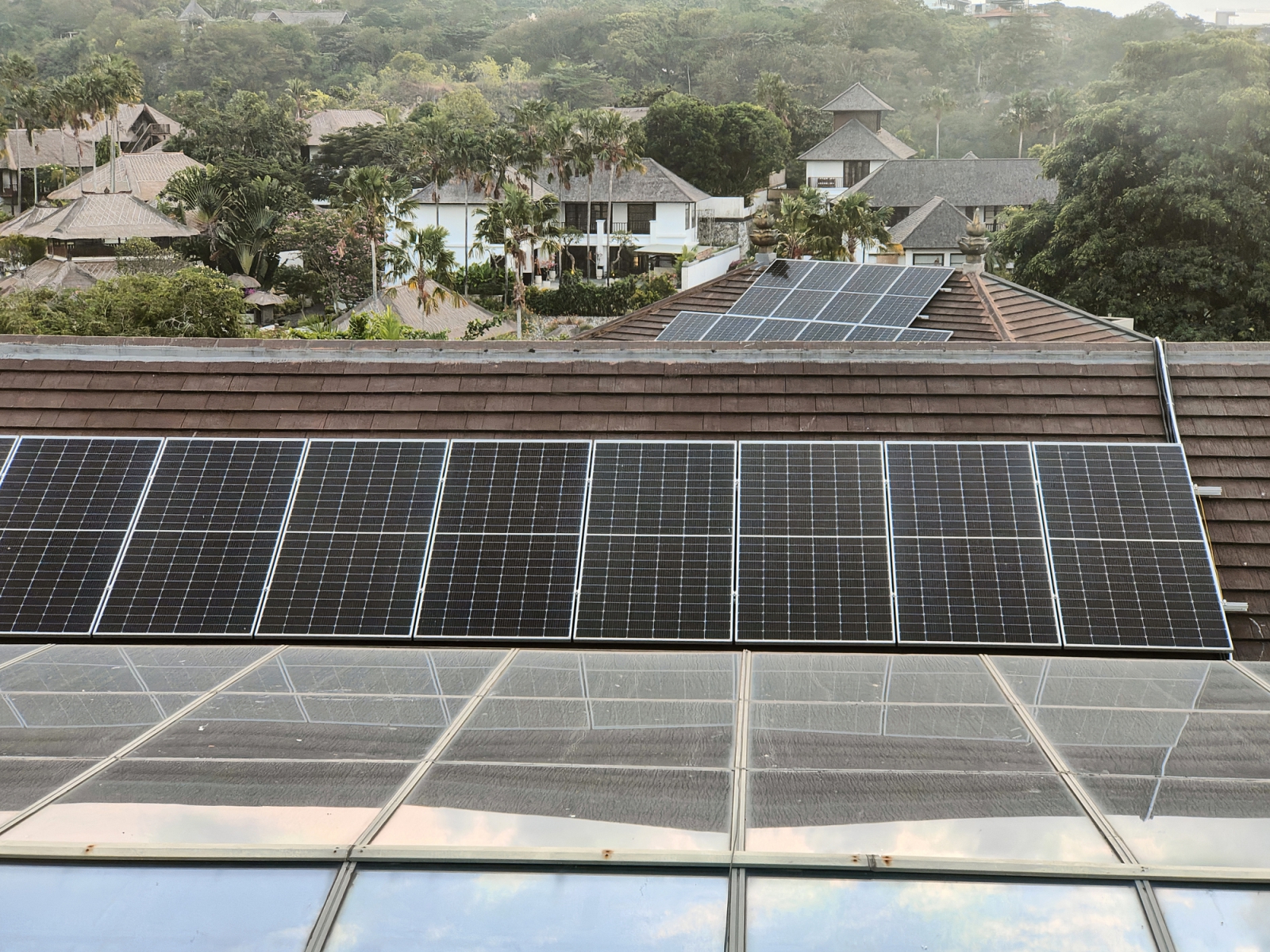
Rooftop solar panels of a tourist resort in Bali. (Photo: iStock)
The Indonesian government has announced a national rooftop solar power quota plan, allocating a total of 901 MW for this year in 11 regulated regions, with annual increases planned to reach a total capacity of 5,746 MW within five years. However, the quota system has affected the willingness of non-large enterprises to install solar panels, raising concerns among local think tanks that it may hinder the country's renewable energy transition.
How is solar quota system implemented?
To account for the intermittency of solar power and maintain the balance of electricity supply and demand, the Indonesian Ministry of Energy and Mineral Resources (ESDM) implemented a rooftop photovoltaic quota system at the end of January this year. Under this system, electricity producers can only obtain a power generation business license (IUPTLU) according to their quota and must sell the electricity to the state-owned electricity company (PLN). Quotas will be distributed on a clustering basis, covering 11 regions including Sumatra and West Kalimantan.
Previously, users interested in installing rooftop photovoltaics only needed to apply for construction with PLN. However, the new regulations require first confirming the availability of a cluster quota before applying to PLN. Fabby Tumiwa, Executive Director of the Institute for Essential Services Reform (IESR), urged the government to expedite the process and provide a detailed rooftop photovoltaic quota plan for different regional subsystems before the application opens in July.
“The distribution of subsystem quotas makes the information more transparent and allows consumers to know if they have a chance to successfully install,” he stated.
.jpg)
A factory in Indonesia with solar panels on the roof. (Photo: iStock)
Net metering cancellation impacts SMEs
IESR believes that with the cancellation of the net metering mechanism at the beginning of this year, the adoption of rooftop photovoltaics will be more common among industrial and commercial users than residential ones. Marlistya Citraningrum, IESR Sustainable Energy Access Program Manager, explained, “Industrial users expect to reduce energy costs and ensure the sustainability of their production processes; they are willing to use rooftop solar power.”
The net metering mechanism is a policy that encourages the use of renewable energy. Users under this mechanism can deduct the amount of electricity they feed into the grid from their electricity bills. IESR believes that with the cancellation of this regulation, only large enterprises installing rooftop photovoltaics will have the potential for profit, significantly reducing incentives for small and medium-sized enterprises and ordinary households, potentially affecting the national energy transition.
To encourage the development of renewable energy, Indonesia adopted the Feed-In Tariff (FIT) mechanism in 2016, whereby the government purchases renewable energy at a specific rate. However, Mari Pangestu, former Indonesian Minister of Tourism and Creative Economy, noted that the monopoly of the state-owned electricity company on transmission, distribution, and generation, coupled with the surplus power generation from major coal-fired power plants, reduces the urgency to develop renewable energy and makes the FIT mechanism less attractive.
Source: PV Magazine, Latitude Media, IEA


